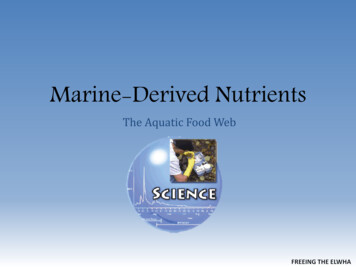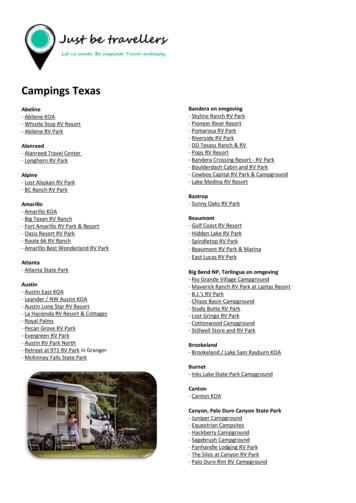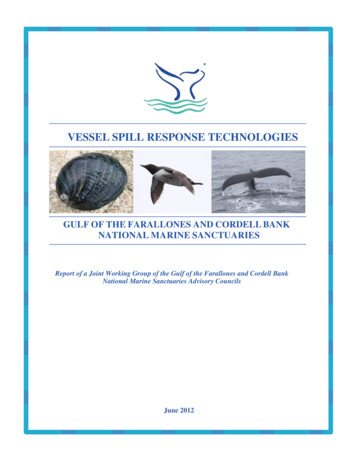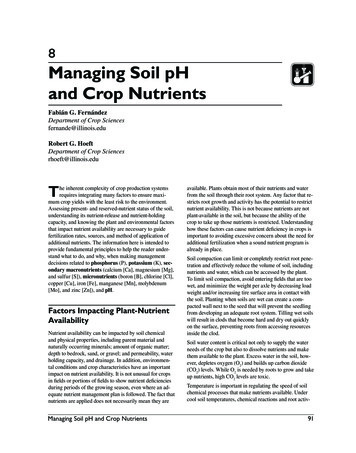
Transcription
Marine-Derived NutrientsThe Aquatic Food Web
Algal BloomsThe North Pacific Turns Green
The Marine Food WebSeals feed on small fish and salmonOrca feed on salmon and/or sealsAdult Salmon feed on small fishAnchovies are common schooling fishJuvenile salmon can be prey for adultsJuvenile salmon feed on planktonSmall forage fish feed on planktonZooplankton feed on algae and smaller planktonAlgae produce food from photosynthesis
Trophic Levels4th rimaryConsumersProducers1 energy unit – sharks, eagles, killer whales, marlins, and other large predators10 energy units – large fish and other predators (squid, salmon, seals, tuna, etc)100 energy units – small fish and filter-predators likejellyfish1000 energy units – zooplankton and tiny filter-feeders10,000 energy units - Phytoplankton
Biomagnification4th rimaryConsumersProducers10,000 chemical units– sharks, eagles, killer whales, marlins, and other large predators1000 chemical units – large fish and other predators (squid, salmon, seals, tuna, etc)100 chemical units – small fish and filter-predators like jellyfish10 chemical units – zooplankton and tiny filter-feeders1 unit – Phytoplankton and algae
Decomposition ofSalmon Carcasses
Movement of Marine-Derived Nutrients Across GenerationsAdult salmon return from seaJuvenile salmon head to seaJuvenile salmon feed on aquatic insectsSalmon CarcassNutrients enter waterNutrients used by algae and bacteria on rocksAquatic insects feed on algae and bacteriaIt is estimated that up 95% of the food consumed by a salmon fry may have originated from the salmon carcasses of its
Movement of Marine-Derived Nutrients in the Food ChainAdult salmon return from seaAdults deposit eggs in gravelEggs eaten by predatorsAlevin eaten by predatorsAlevin hatch from eggsFry feed on aquatic insectsSmolts head to seaFry eaten by predators
This project was made possible in part by a grant fromWashington’s National Park Fund.
1000 energy units - zooplankton and tiny filter-feeders 100 energy units - small fish and filter-predators like jellyfish 10 energy units - large fish and other predators (squid, salmon, seals, tuna, etc) 1 energy unit - sharks, eagles, killer whales, marlins, and other large predators Primary Consumers Secondary Consumers Tertiary











